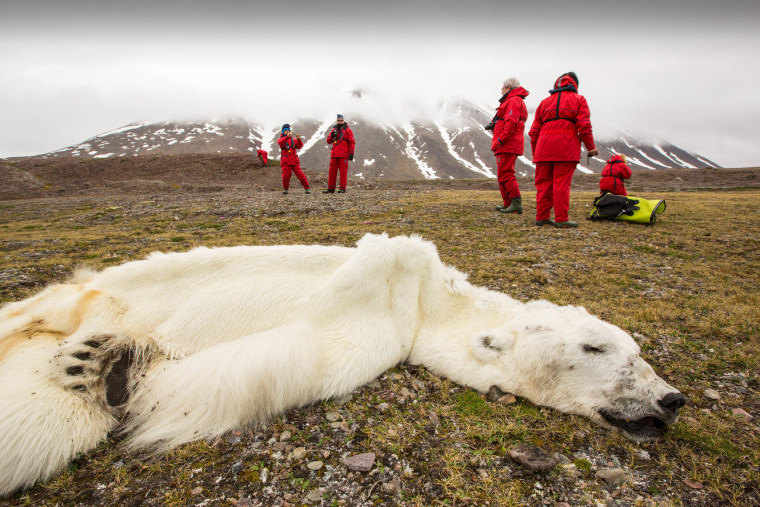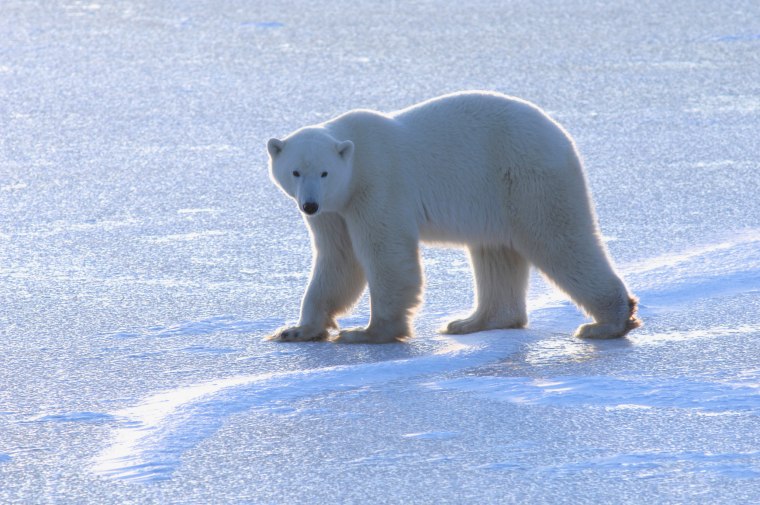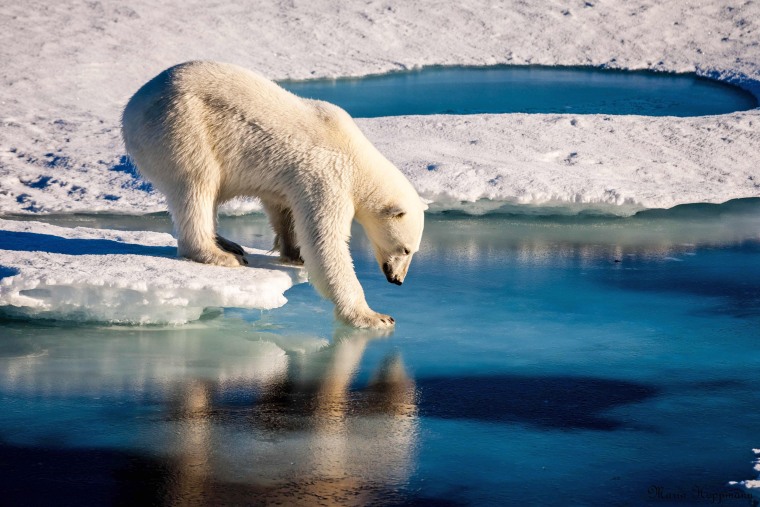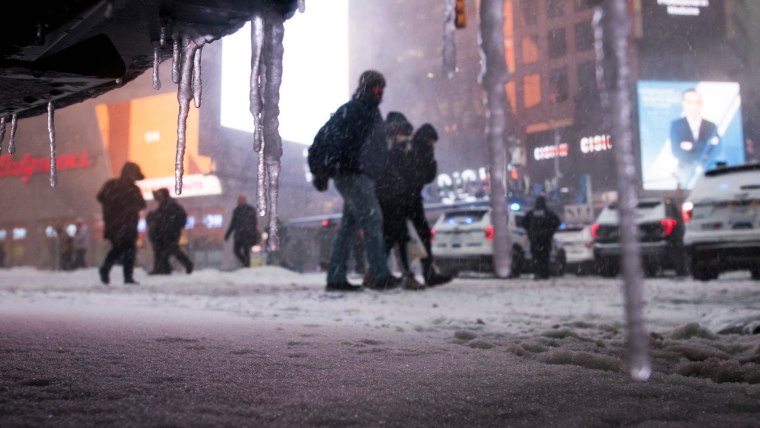what is being done to save polar bears from extinction
For the past 2 decades, scientists have been monitoring the furnishings of a warming Chill on the earth's polar bears — and the bears' future has looked increasingly bleak.
The latest estimates suggest that Arctic bounding main ice is disappearing by 14 percentage a decade, drastically limiting the bears' ability to chase the seals on which they feed. And research on bears living on the Arctic islands of Svalbard shows that the animals are now reproducing at a charge per unit one-fifth of that seen just 20 years ago.
Given these dismal statistics, scientists now predict that the global population of polar bears could fall from twenty,000 to thirty,000 today to fewer than 5,000 past 2100 — and beyond that no one knows. Even if a pocket-size population of bears manage to hang on, they're not out of the woods.

"One of the issues when population levels in a species get this depression is that you lot start to get an increased likelihood of genetic disorders due to inbreeding," says University of Alberta biologist Andrew Derocher.
Luckily for the bears and the humans who love them, Derocher and a core of beau scientists are developing a complex set up of strategies to salvage the animals. Information technology'due south an audacious plan, encompassing everything from providing actress food for the bears to turning female grizzly bears into surrogate moms for their white-coated cousins.
But it may be all that stands between the bears and oblivion.
Food for famished bears
Polar bears can now be found beyond the Arctic Circle from Alaska to Russia. But equally the planet heats up and sea water ice melts, the animals' range will shrink forth with their population. (Some people have suggested replacing lost bounding main water ice with artificial floes, but this would be unlikely to work because algae — the basis of the entire nutrient chain that ultimately provides seals for the bears — grows only on real ice.) Ultimately, the just polar bears to survive in the wild may be the ones living in the Norwegian bay region of the Canadian archipelago.
"This region is expected to be ane of the last bastions of Chill ocean water ice," says Steven Amstrup, main scientist at Polar Bears International, a conservation group in Bozeman, Montana. "With the correct planning and strategies, we can help polar bears remain in that location equally long every bit possible."
For five,000 bears to survive in this region (the minimum idea to exist required to forestall inbreeding), scientists believe the animals may need help from humans. Derocher envisions helicopters zipping around the region, dropping bear chow. Without such deliveries, he says, hungry bears might wander south into human settlements — and risk beingness shot.
Airdrops of bear grub wouldn't come inexpensive. Derocher estimates that delivering enough grub to sustain those five,000 bears could cost the Canadian government $2 million a month. Given the hefty price tag, he proposes that the chow exist used only during times when the bears are finding information technology especially difficult to catch and kill seals.
Maintaining genetic variety
The Norwegian bay polar bears are genetically unique. If they're the only bears to survive in the wild, they may lack the genetic multifariousness needed to stay healthy over the long term. "If you don't have a diverse population, you run the risk of animals non having the adaptability to bargain with a disease, for example," Derocher says.
To address this problem, Derocher and his fellow scientists call up it might be necessary to relocate polar bears from other parts of the Arctic to the Norwegian bay region. The animals would be shot with tranquilizer darts and then transported n by shipping for release.

"You'd mainly be looking at relocating juveniles, as the problem with shifting developed polar bears is that they immediately want to get dorsum where they came from," Derocher says. "You'd too wait to initially ensure there's lots of nutrient resource, peradventure through deposits of bear chow, to make them groovy to stay there long term."
Some other possibility would be to keep a diverse population of polar bears in zoos and then reintroduce the convict animals into the wild if they're needed to sustain a dwindling population. "Once the planet starts to absurd once more in hundreds or thousands of years, and body of water ice reforms, you would have a nucleus of bears which you could so permit to recolonize the areas they formally occupied," Derocher says.
Surrogate mothers
If the population of polar bears in the wild drops precipitously, scientists may seek help from grizzly bears, which are genetically similar to polar bears but well adjusted to survive on an increasingly hot planet.

Derocher thinks we could freeze polar bear sperm and eggs and use them, if necessary, to create embryos that would be transplanted into female person grizzlies. "We know this would be quite viable, but that'southward probably a scenario nosotros're simply looking at if we see a catastrophic refuse in the species in the second half of this century," he says.
Just Amstrup warns that unless we detect ways to mitigate the ongoing warming of the Arctic, the species volition cease to exist in the wild even if we turn to assisted reproduction.
"If human-driven climate change continues unabated, the last ice areas will ultimately disappear, and the remaining wild bears with them," he says. "There's no future for polar bears in an Arctic without the ocean ice which enables them to hunt and grade the dens where they raise their cubs. From then on, the species volition merely exist in zoos."

FOLLOW NBC NEWS MACH ON TWITTER, FACEBOOK, AND INSTAGRAM.
Source: https://www.nbcnews.com/mach/science/scientists-hatch-bold-plan-save-polar-bears-ncna851356
0 Response to "what is being done to save polar bears from extinction"
Post a Comment